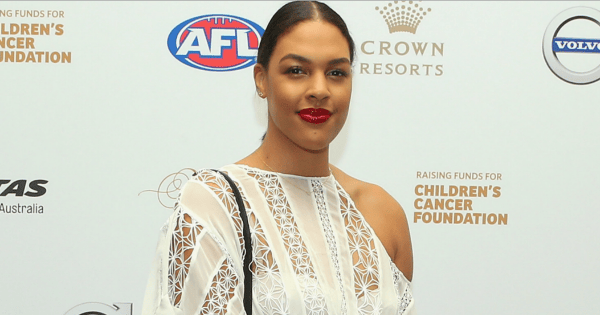
Women’s sport is all over the news today. And while normally I’d rejoice that the media are finally paying attention to our nation’s brilliant female athletes, the mighty Australian Opals are attracting coverage today for some pretty awful reasons.
On Sunday afternoon, basketballer Alice Kunek posted a photo on Instragam in which she and Melbourne Boomers teammate, Tess Madgen, were both wearing fancy dress. Kunek was dressed up as rapper Kanye West, complete with a ripped white t-shirt, a beanie… and a face of dark brown paint.
Liz Cambage – who is of Nigerian descent – was shocked and upset by the photo of her fellow Opal appearing in blackface. She took to Twitter to express her surprise and disgust at the ‘costume’, sending a series of tweets that have since provoked widespread media attention.
So – before we go on – let’s pause for a brief history of blackface and why it is so deeply offensive for people of colour.
Blackface dates back to the 1800s, when white Americans minstrels would paint their faces with charcoal in an exaggerated and degrading portrayal of African-American characters. While ultimately intended as entertainment for white people, these performances also served as a form of not-so-subtle, pro-slavery propaganda. The actors represented black Americans as stupid, lazy, ugly, brutish and above all, deserving of enslavement, unable to live independently of their white ‘masters’.
The performances became popular all over the world – including in Australia – and served to entrench awful and lasting stereotypes of black people. The degrading tradition very much played itself out in Australia as well, with white actors continuing to play Aboriginal roles as recently as the 1950s and 60s.
Top Comments
I knew Cambage as a kid. At the age of 10-11, she was already disrespectful, bitchy, rude, "entitled" and strived to be the centre of attention... This is not about race, or being offended. It was a damn costume. It is about her trying to get back in the spotlight, to which he has succeeded. She is not grateful, nor respectful or humble in her success. Her team mates dont like her because of her attitude, not because of her race.
Your not liking her has NOTHING to do with her teammate's oblivion to her racist costume. Your point makes no sense, you just wanted to mention you knew her years ago and don't like her. Congratulations.
Well I am quite sure she didn't like you either. If it is something that happened over a decade ago, perhaps it is time to let it go.
Completely agree with Anon that this is just overly-PC nonsense. Costumes are not offensive. It kinda looks like she's dressing as Kanye. I have a feeling if she wasn't caucasian, no one would care.
Presumably, if she wasn't Caucasian she wouldn't have painted her face...
Weren't the guys who did a Blackface on Hey, hey it's Saturday (which got called out by Harry Connick Jr) Indian? So perhaps Blackface isn't restricted to caucasians?
Yes they were.